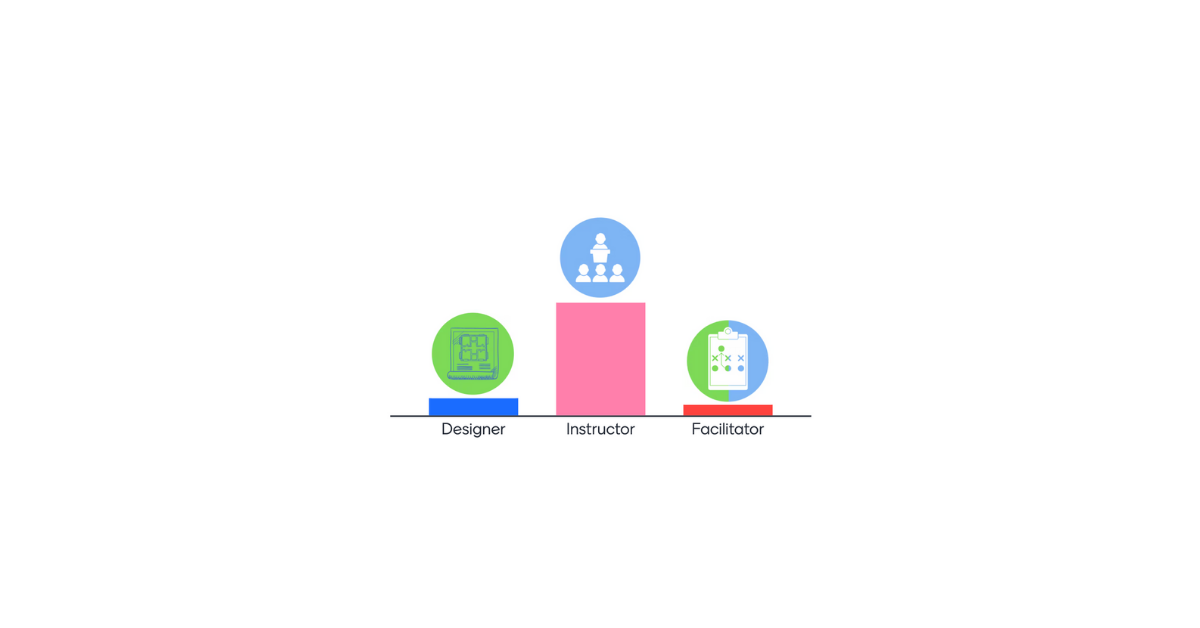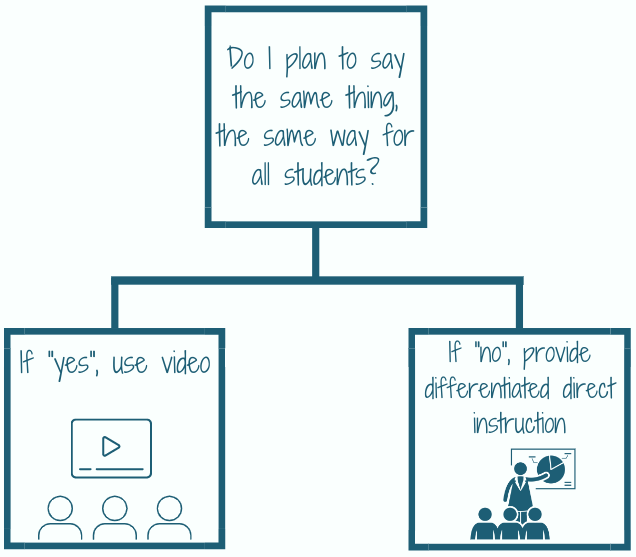Teachers have three primary roles – designer, instructor, and facilitator. When I facilitate blended learning workshops, I ask participants to think about these three roles and identify the role they spend the most time and energy in. The responses always yield the same results. Most teachers dedicate significant time and energy to their instructor role, explaining complex concepts and processes and modeling specific strategies and skills.
A teacher’s role as the instructor is a valuable aspect of their work; however, it can consume so much class time that teachers neglect their role as facilitators supporting students as they work. I would like to see teachers balance the time they spend on instruction with the time they spend facilitating learning and providing feedback as students attempt to do something with that instruction. It is in the moments when students are practicing and applying that they encounter obstacles, have questions, and need additional support.
Hattie’s and Timperley’s (2007) research on feedback identified it as having a significant impact on student achievement and learning. Despite a growing body of research on the power of feedback, it is easy to neglect in classrooms because teachers feel pressure to cover content. This pressure results in teachers spending large chunks of time at the front of a classroom talking instead of working alongside students.
The challenge for teachers is figuring out how to create the time and space necessary to prioritize feedback. Blended learning can help!
First, we have to deal with the reality that teachers spend a lot of time at the front of the room talking. How can we leverage blended learning to be more strategic about the form instruction takes in classrooms? I encourage teachers to consider the following question.
The Flipped Classroom Model: Using Video Strategically
If teachers plan to say the same thing the same way, demonstrate the same process, or provide the same model for all students, I encourage them to use the flipped classroom model and make a video. That way, students can control the pace they consume and process that instruction. They can pause, rewind, and rewatch a recorded explanation or model.
A video can also make instruction more accessible. Instead of following along from the back of the classroom where it might be challenging to see what is projected on the front board, students have the information close up. Adding closed captioning to videos can remove barriers and boost comprehension. If students are viewing a video on YouTube, they can adjust the speed of the video to make it easier to follow along.
The Station Rotation Model: Providing Differentiated Direct Instruction
Effective use of differentiated instruction “has been proven to successfully promote the equity dimension of instructional effectiveness by providing all students with the opportunity to improve their achievement levels” (Valiandes, 2015). If teachers plan to differentiate their instruction to meet the specific needs of a group of students, I recommend using the station rotation model to work directly with small groups of students.
The station rotation model moves students through a series of stations: teacher-led, online, and offline. This small group dynamic makes it possible for teachers to provide specific supports and scaffolds to aid comprehension and focus on texts, problems, or examples within each group’s zone of possibility.
Embracing Our Facilitation Role & Prioritizing Feedback with Blended Learning
A more strategic approach to instruction frees teachers to invest more time and energy in their role as facilitators of learning. I often compare the teacher’s role facilitating learning to the work of a coach. Coaches watch players as they practice and provide specific, actionable feedback to support their development. In the same way, teachers should dedicate the same time and attention to feedback as they do to instruction. We can spend all day telling students how to do something, like write a thesis statement, solve a type of problem, or analyze a primary source. However, when students attempt to apply what they are learning, they need support in the form of feedback.
Dedicating class time to feedback demands that teachers design lessons that do not rely on them to deliver instruction live or orchestrate the entire learning experience. My favorite blended learning models for providing real-time feedback are the station rotation and the playlist models.
In a station rotation, the teacher-led station is devoted to giving focused feedback on a specific element of the students’ work. The teacher may jump in and out of digital documents leaving comments, suggestions, and linking students to additional resources to help them develop and improve their work. Alternatively, the teacher can carousel around the group if students are working offline, providing written or verbal feedback.
If teachers use the playlist model to allow students to self-pace through a series of learning activities designed to move them toward a clear objective, they can build “teacher time” into the playlist. When students reach a “teacher time” block on their playlist, they meet with the teacher to receive feedback on their work and discuss their progress on the playlist. During these one-on-one sessions, the teacher can personalize the playlist, making the necessary adjustments to ensure the student continues making progress toward learning objectives.
Not only does dedicating time to giving students feedback improve learning outcomes, but it provides valuable insight into student progress and can result in stronger teacher-learner relationships. When teachers build time into class to provide feedback, they better understand where each student is in their journey toward mastering skills and understanding concepts. This understanding of individual student progress makes it easier to differentiate instruction, supports and scaffolds, time on task, and the academic rigor and complexity of tasks to ensure all students continue making progress. Ultimately, feedback is how students feel seen and supported in a class. As a result, dedicating time to feedback can help teachers develop stronger relationships with their students.
Hattie, J., and Timperley, H. (2007). The power of feedback. Rev. Educ. Res. 77, 81–112. doi: 10.3102/003465430298487
Valiandes, S. (2015). Evaluating the impact of differentiated instruction on literacy and reading in mixed ability classrooms: Quality and equity dimensions of education effectiveness. Studies in Educational Evaluation, 45, 17-26.
Want to learn more about blended learning and the station rotation model? Check out my online, self-paced mini-courses on the station rotation and flipped classroom models!







3 Responses
The chart of three teaching roles is provocative.
A couple thoughts on feedback:
1) In support of live teacher feedback, I was recently disappointed, but not surprised, after polling HSers to measure how many read my LMS-based feedback. [Big surprise, most don’t.] The exception was for assignments where they express thoughts on an issue/article/etc., with the cynics reading to check if I’m just giving “busy work.”
2) The past few years I’ve been incorporating more peer feedback on projects, especially with interim reviews. Important with this is the concept of balanced feedback.
Thanks for all you do!
Thank you for sharing your thoughts on this post, Ray! I’ve worked with many teachers who express frustration with students not reading feedback. When students are given feedback at the end of the process as their work is being assessed and are not required to act on the feedback to improve the work, they do not invest the time reading or thinking about it. When I gave feedback during the process, it was a different experience. They would immediately jump to where I had made a comment in their document and work on a revision. It was very rewarding!
Take care.
Catlin
I love your ideas as the teacher as the facilitator. This reminds of a class I took back in the winter through the VDOE: Science Inquiry in the Classroom. It was very similar to this approach and related it to all kinds of Science units, experiments, and field work.
This maybe of topic, and I do apologize, I am just afraid that even though I copied and pasted your web address, I may not be able to get through since this is part of the Blazing Trail course. I noticed your Blended Online Courses that are available. I would like to find out more details about these. I know our emails are confidential and will not be used on “our reply to your Balance Instruction & Feedback with Blended learner demonstration. Could you please reach out to me privately to give me specifics on time, dates, and cost please?
Sincerely,
Kim